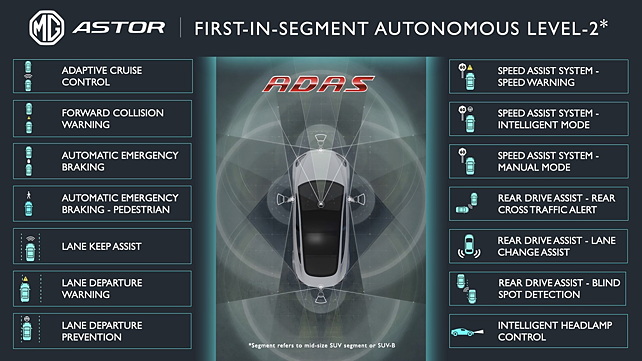Automakers across the globe are gradually incorporating active safety and self-driving features into their vehicles. According to researchers, by 2025, there will be approximately 8 million autonomous or semi-autonomous vehicles on the road.
The Society of Automotive Engineers (SAE) has defined 6 levels of driving automation, ranging from Level 0 (completely manual) to Level 5. (fully autonomous). However, The term “automated” is used by the SAE instead of “autonomous.”
Levels of driving automation
- Level 0 : No Driving Automation
- Level 1 : Driver Assistance
- Level 2 : Partial Driving Automation
- Level 3 : Conditional Driving Automation
- Level 4 : High Driving Automation
- Level 5 : Full Driving Automation
Level 0 : No Driving Automation
The vast majority of vehicles on the road today are Level 0: manually controlled. The driver is entirely responsible for controlling the vehicle, including steering, braking, accelerating, and slowing down.
Reverse parking sensors/cameras, blind spot warnings, and collision warnings are examples of safety features that can be found in Level 0 vehicles. Even automatic emergency braking, which applies aggressive braking in the event of a collision, is classified as Level 0 because it does not act continuously.
Level 1 : Driver Assistance
This is the least advanced level of automation. At this level, the automated systems begin to take control of the vehicle in specific situations, but not completely. Adaptive cruise control, which controls acceleration and braking in highway driving, is an example of Level 1 automation.
Drivers can take their feet off the pedals depending on the functionality. Adaptive cruise control, which keeps the vehicle a safe distance behind the next car, is classified as Level 1 because the human driver monitors other aspects of driving such as steering and braking.MG Gloster is an example of Level 1 Automation.
Level 2 : Partial Driving Automation

This refers to advanced driver assistance systems, abbreviated as ADAS. Autonomous Level 2 features not only make driving more comfortable but also prioritise your safety. The vehicle is capable of steering as well as accelerating and decelerating. Because a human sits in the driver’s seat and can take control of the car at any time, automation falls short of self-driving. Level 2 examples include Mahindra XUV700 and MG Astor.
Level 3 : Conditional Driving Automation
Level 3 makes decisions based on changing driving situations around the vehicle using various driver assistance systems and artificial intelligence. People inside the vehicle do not need to supervise the technology, so they can do other things. However, a human driver must be present, alert, and capable of taking control of the vehicle at any time, especially in the event of a system failure emergency.

Volkswagen owned Audi developed Level 3 traffic jam assistance technology for its 2019 A8 flagship sedan, but the system never received regulatory approval in Germany and has since been shelved. As a result, Honda became the world’s first automaker to sell an approved Level 3 traffic jam assistance system to consumers.
Honda began leasing the all-new Legend equipped with “Honda SENSING Elite” on March 5, 2021, which is a variation of Honda SENSING, a suite of advanced safety and driver-assistive technologies currently available for Honda vehicles worldwide. The “Traffic Jam Pilot” function is one of the “elite” technologies, qualifying for Level 3 automated driving.
Level 4 : High Driving Automation
Level 4 automation does not require any human interaction in the vehicle’s operation because it is programmed to stop itself in the event of a system failure. Because a human driver is never required, Level 4 vehicles are capable of self-driving. However, they can only do so in a limited area until legislation and infrastructure evolve (usually an urban environment where top speeds reach an average of 50kmph).
Level 5 : Full Driving Automation
Unlike levels 3 and 4, level 5’s “Full Automation” is where true autonomous driving becomes a reality. Drivers do not need to be fit to drive and do not even need a licence. The car handles all driving tasks – there isn’t even a cockpit. As a result, everyone in the car becomes a passenger, providing new mobility options for people with disabilities, for example.
Cars at this level must clearly meet stringent safety standards and will only drive at relatively low speeds in populated areas. They can also drive on highways, but for the time being, they will only be used in specific areas of city centres.

